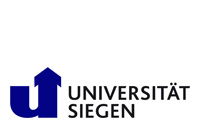
News
DAAD German Academic Exchange Service
C1 Face recognition from 2D/3D-Sensor data
Project Leader
Prof. Dr. rer. nat. Christoph Ruland, Prof. Dr. rer. nat. Volker Blanz, Jun.-Prof. Dr.-Ing. Marcin Grzegorzek
Initial Situation
The face recognition traditionally relies on the usage of 2D image data. The main problems related to the automatic face recognition from 2D images is currently characterized by the fact that the image signal strongly depends on the view angle, the lighting and facial expression, but also on the alteration of the person during time. The origin of the view angle dependency of many face recognition algorithms lies in the training of frontal photographs, which model 3D rotations only as a discrepancy of the 2D image signal. Thus, the tolerance of the approaches is highly constrained, as occlusions, which are no longer explicitly represented in the model, occur for larger angles. The 3D morphable model technology is a first extension of the frequently used 2D model approach on a 2D face model, which provides a significantly better recognition rate based on 2D source image data.
Objectives and Work Plan
The subproject uses the combination of 2D and 3D data in order to allow the automatic recognition of faces captured from strongly differing view directions and at strongly varying lighting conditions. In the case of the 3D morphable model technology, a manual initialization substituting automatic initialization processes, is required. The applicability of the different approaches also strongly depends on the nature of the 3D data, particularly on the kind of 3D sensor used. While most approaches were developed on the base of laser scans or using structured light, it is intended, in this subproject, to make investigations with a time-of-flight (ToF) camera, more specifically the PMD camera. If necessary, basic approaches will have to be redeveloped, as the ToF data are characterized by their reduced shadowing and their relatively low resolution.
 |
|
|
|
Simulated aging of a human |

